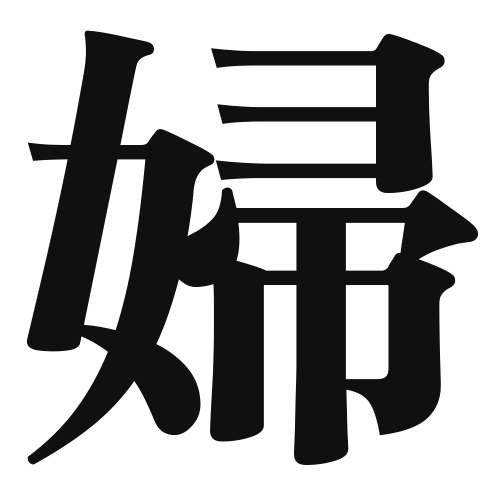1. Overview of Meaning
The kanji 婦 (fu) primarily means “woman” or “wife.” It is often used in contexts related to femininity and female roles in society.
2. Formation and Radical
Formation: The kanji 婦 is a compound character that combines elements to convey its meaning. It is made up of the radical 女 (woman) and the phonetic component 付 (fu), which contributes to its pronunciation.
Radical: The radical of 婦 is 女, which is commonly associated with female-related characters.
3. Examples of Usage
Common Words and Phrases: Some frequently used words that include 婦 are:
- 婦人 (fujin) – “woman” or “lady”
- 主婦 (shufu) – “housewife”
Example Sentences:
- 彼女は立派な婦人です。 (She is a respectable woman.)
- 彼は主婦として家事を手伝っています。 (He helps with housework as a househusband.)
4. Synonyms and Antonyms
Similar Kanji: A similar kanji is 女 (onna), which also means “woman” but is more general and can refer to any female. In contrast, 婦 often implies a married woman or a woman in a specific social role.
Antonyms: An antonym for 婦 could be 男 (otoko), which means “man.” This highlights the gender distinction in the language.
5. Cultural and Historical Background
Relation to Japanese Culture: The kanji 婦 reflects traditional views of women in Japanese society, often associated with roles such as motherhood and homemaking.
Proverbs and Idioms: There are various proverbs that include the concept of women, such as 「女は三度生まれる」 (A woman is born three times), which emphasizes the different roles a woman takes on throughout her life.
